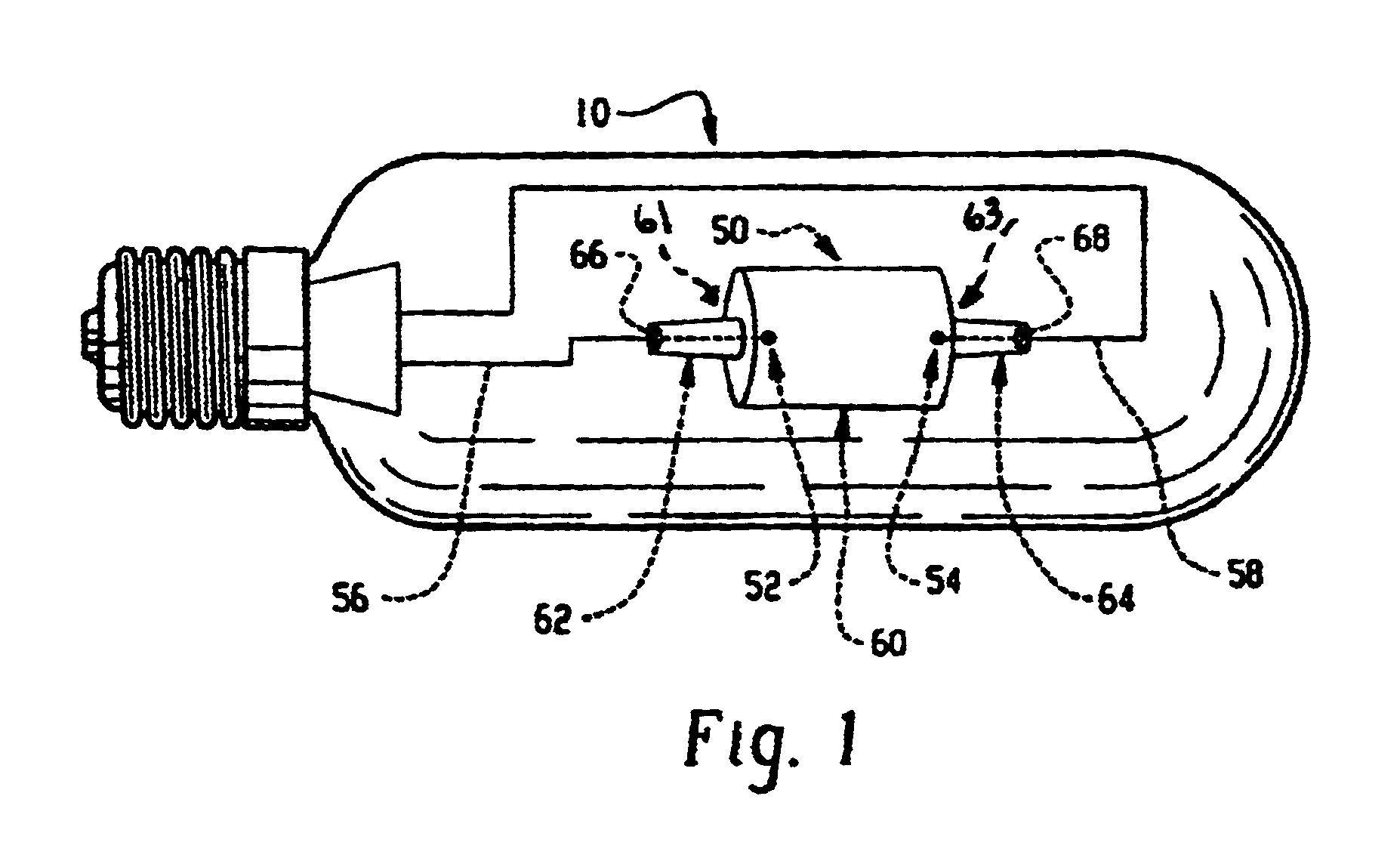Ceramic metal halide lamp
a metal halide lamp and ceramic technology, applied in the field of light, can solve the problems of arc tube cracking, difficult to achieve ra greater than 80, and halide cost per volume becomes more important, so as to improve the life of the lamp
- Summary
- Abstract
- Description
- Claims
- Application Information
AI Technical Summary
Benefits of technology
Problems solved by technology
Method used
Image
Examples
Embodiment Construction
250 W lamps were tested using a ceramic arctube whose body was 33.7 mm long and 15.6 mm diameter when measured on the outside. The ceramic arctube volume was 4.1 cc, and the arc gap between the electrode tips was 23.7 mm. The arctubes in cells A and B were dosed with 18 mg of mercury, and 50 mg of metal halide. Calcium iodide was included in the lamps of cell B which demonstrated an Ra 10 points greater than those in cell A. A further cell H was evaluated wherein cesium iodine was included in the dose. The cesium presence was not deleterious to lamp function and has been found to improve lamp life in horizontal burn orientations.
Although the invention has been described with reference to the exemplary embodiments, various changes and modifications can be made without departing from the scope and spirit of the invention. For example, the disclosure focused on a ceramic discharge chamber comprised of alumina. Other ceramic compositions, including sapphire, AlN, etc. are known to the s...
PUM
| Property | Measurement | Unit |
|---|---|---|
| power | aaaaa | aaaaa |
| power | aaaaa | aaaaa |
| power | aaaaa | aaaaa |
Abstract
Description
Claims
Application Information
 Login to View More
Login to View More - R&D
- Intellectual Property
- Life Sciences
- Materials
- Tech Scout
- Unparalleled Data Quality
- Higher Quality Content
- 60% Fewer Hallucinations
Browse by: Latest US Patents, China's latest patents, Technical Efficacy Thesaurus, Application Domain, Technology Topic, Popular Technical Reports.
© 2025 PatSnap. All rights reserved.Legal|Privacy policy|Modern Slavery Act Transparency Statement|Sitemap|About US| Contact US: help@patsnap.com


